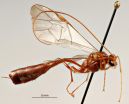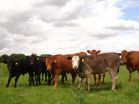Linguistic methods uncover sophisticated meanings, monkey dialects
2014-12-15
(Press-News.org) The same species of monkeys located in separate geographic regions use their alarm calls differently to warn of approaching predators, a linguistic analysis by a team of scientists reveals. The study, which appears in the journal Linguistics and Philosophy, reveals that monkey calls have a more sophisticated structure than was commonly thought.
"Our findings show that Campbell's monkeys have a distinction between roots and suffixes, and that their combination allows the monkeys to describe both the nature of a threat and its degree of danger," explains the study's lead author, Philippe Schlenker, a Senior Researcher at Institut Jean-Nicod within France's National Center for Scientific Research (CNRS) and a Global Distinguished Professor at New York University.
The paper may be downloaded here: http://bit.ly/1zCiHMh.
The combined team of linguists and primatologists analyzed alarm calls of Campbell's monkeys on two sites: the Tai forest in Ivory Coast and Tiwai Island in Sierra Leone. Notably, monkey predators on the two sites differ: the primates are threatened by eagles on Tiwai Island and by eagles and leopards in the Tai Forest.
Using transcriptions of these monkey calls gathered in field experiments involving playbacks of predator calls (e.g. eagle shrieks and leopard growls), the researchers found greater complexity in expression than previously understood as well as differences in alarm calls between the two locations.
Confirming with linguistic means some hypotheses initially made by primatologists, their analysis showed that these calls make a distinction between roots (especially "hok" and "krak") and suffixes (-oo), and that their combination allows the monkeys to describe both the nature of a threat and its degree of danger. For instance, "hok" warns of serious aerial threats--usually eagles--whereas "hok-oo" can be used for a variety of general aerial disturbances; in effect the suffix -oo serves as a kind of attenuator.
Moreover, their results suggest that the calls are not used in the same way in the Tai Forest and on Tiwai Island. For instance, "krak" usually functions as a leopard alarm call in Tai, but as a general alarm call - to warn of all sorts of disturbances, including eagles - on Tiwai. The article seeks to explain why this 'dialectal variation' is found.
The authors' preferred analysis is based on the device of 'implicatures,' borrowed from the pragmatics of human languages. It posits that the meaning of a word can be enriched when it competes with a more informative alternative - for instance, "possible" competes with "certain," which is more informative, and for this reason "possible" usually comes to mean "possible but not certain" (for instance in: "It's possible that John is the culprit" - which implies that this is not a certainty). The authors propose that "krak" always has a meaning of general alarm, but that in Tai it comes to be enriched by competition with "hok" (meaning: aerial threat) and "krak-oo" (meaning: weak threat) - with the result that it is enriched with a 'not "hok" ' component (hence: the threat is a non-aerial threat) and a 'not "krak-oo" ' component (hence: the threat is not weak). This yields a meaning of a 'serious ground-related threat,' closely associated with leopards.
In the long term, Schlenker observes, the research should help initiate the development of a form of "primate linguistics"--the application of sophisticated methods from contemporary formal linguistics to systems of animal communication.
INFORMATION:
ELSE PRESS RELEASES FROM THIS DATE:
2014-12-15
CAMBRIDGE, MA -- A new study from MIT implicates a family of RNA-binding proteins in the regulation of cancer, particularly in a subtype of breast cancer. These proteins, known as Musashi proteins, can force cells into a state associated with increased proliferation.
Biologists have previously found that this kind of transformation, which often occurs in cancer cells as well as during embryonic development, is controlled by transcription factors -- proteins that turn genes on and off. However, the new MIT research reveals that RNA-binding proteins also play an important ...
2014-12-15
In 1912, three species in the parasitic wasp genus Ophion were described by two different entomologists, increasing the number of known species in North America to eleven. It has long been known that the actual diversity is much higher; however, it took 102 years for any additional species to be described.
"The main reason for this is that everyone has assumed that Ophion are just too difficult to tell apart. Museum collections are full of unidentified Ophion, but nobody has wanted to face the challenge of sorting them out" said Marla Schwarzfeld, an entomologist who ...
2014-12-15
CAMBRIDGE, Mass., December 15 -- Scientists at The Forsyth Institute and Tufts University have succeeded in describing and validating a unique system of oral vaccine delivery using a common bacteria found in the mouth. Findings published today by Elsevier in Microbes and Infection identify Streptococcus mitis as a successful vector for oral mucosal immunization, and further research will determine its potential clinical use in tuberculosis vaccine development.
"Although injected vaccines are traditionally viewed as effective means of immunization to protect internal organs, ...
2014-12-15
The sudden appearance of a face within our visual field can affect the motor action accompanying a gesture even if the face is totally unrelated to what we are doing and even if we try to ignore it. At one condition, though: the face must display an emotionally significant expression. A study conducted by scientists of the International School for Advanced Studies in Trieste, and just published in Psychonomic Bullettin & Review, describes the phenomenon in detail.
Many are the things that can influence our actions at the motor level. Among them, a particularly effective ...
2014-12-15
New Rochelle, NY, December 15, 2014-Adiponectin, a collagen-like protein secreted by fat cells, derives from the ADIPOQ gene. Variations in this gene may increase risk for type 2 diabetes, cardiovascular disease, and various cancers. A new study that links specific variations in the ADIPOQ gene to either higher or lower colorectal cancer risk is published in Genetic Testing and Molecular Biomarkers, a peer-reviewed journal from Mary Ann Liebert, Inc., publishers. The article is available on the Genetic Testing and Molecular Biomarkers website until January 11, 2014.
Xin ...
2014-12-15
Since August 2014, aflibercept (trade name Eylea) has been available also for patients with visual impairment due to diabetic macular oedema (DMO). The German Institute for Quality and Efficiency in Health Care (IQWiG) examined in a dossier assessment whether this drug offers an added benefit over the appropriate comparator therapy.
According to the findings, an added benefit in this therapeutic indication is not proven: The data showed no relevant differences between the treatment groups for patients in whom the fovea centralis is also affected. The drug manufacturer ...
2014-12-15
Squid, what is it good for? You can eat it and you can make ink or dye from it, and now a Penn State team of researchers is using it to make a thermoplastic that can be used in 3-D printing.
"Most of the companies looking into this type of material have focused on synthetic plastics," said Melik C. Demirel, professor of engineering science and mechanics. "Synthetic plastics are not rapidly deployable for field applications, and more importantly, they are not eco-friendly."
Demirel and his team looked at the protein complex that exists in the squid ring teeth (SRT). ...
2014-12-15
The team from The University of Nottingham and Queen Mary University of London, spent ten months studying to the ways cows communicate with their young, carefully examining acoustic indicators of identity and age.
They identified two distinct maternal 'calls'. When cows were close to their calves, they communicated with them using low frequency calls. When they were separated - out of visual contact - their calls were louder and at a much higher frequency.
Calves called out to their mothers when they wanted to start suckling. And all three types of calls were individualised ...
2014-12-15
ANN ARBOR--It's not unusual for people to use war metaphors such as "fight" and "battle" when trying to motivate patients with cancer.
But a new University of Michigan study indicates that using those words can have an unintended negative effect.
David Hauser, a U-M doctoral student in psychology, and colleague Norbert Schwarz of the University of Southern California, found in three studies that exposure to metaphoric language relating cancer to an enemy significantly lessens the extent to which people consider cancer-prevention behaviors.
"Hearing metaphoric utterances ...
2014-12-15
WASHINGTON D.C., Dec. 15, 2014--Cervical cancer is, in many ways, a shining example of how successful the war on cancer can be. Thanks largely to the advent of Pap smear screening, U.S. cervical cancer deaths decreased dramatically, by more than 60 percent, between 1955 and 1992. In the last two decades, better treatment outcomes and more powerful imaging techniques have steadily pushed 5-year survival rates ever higher. The latest weapons in modern medicine's arsenal are two new vaccines that were recently approved by the U.S. Food and Drug Administration for preventing ...
LAST 30 PRESS RELEASES:
[Press-News.org] Linguistic methods uncover sophisticated meanings, monkey dialects




